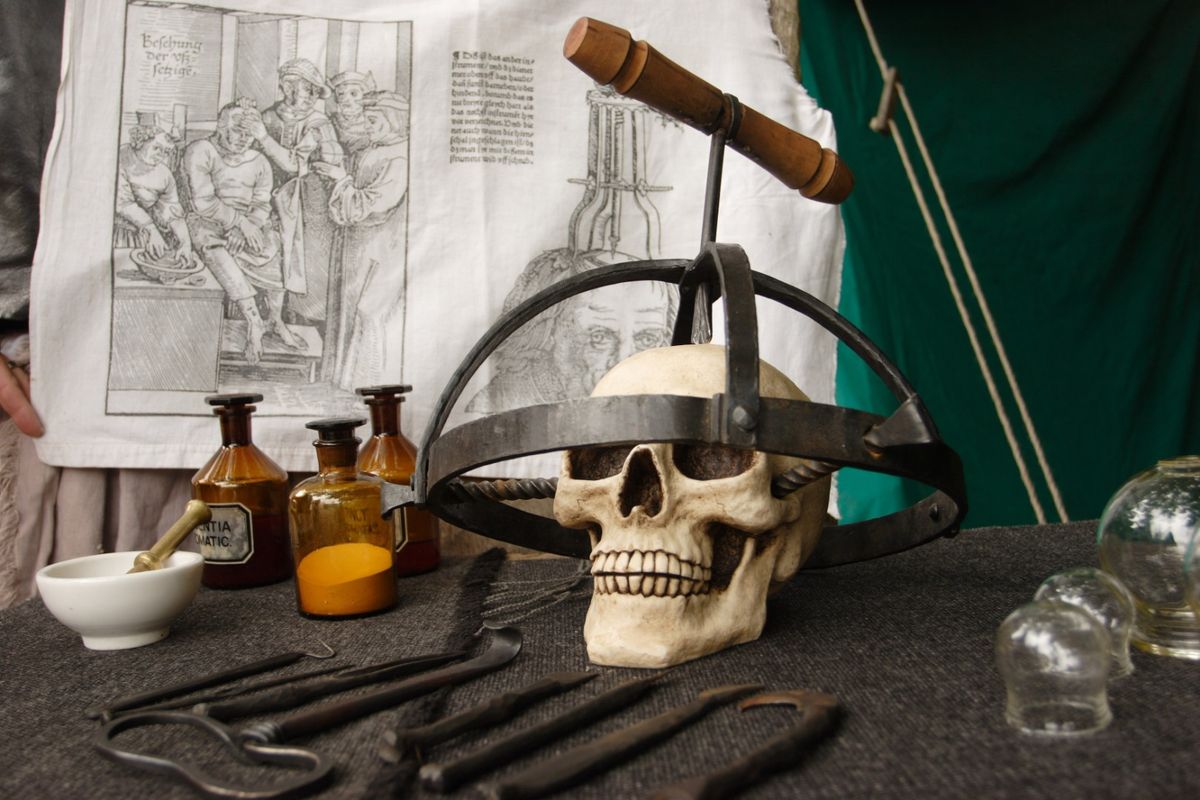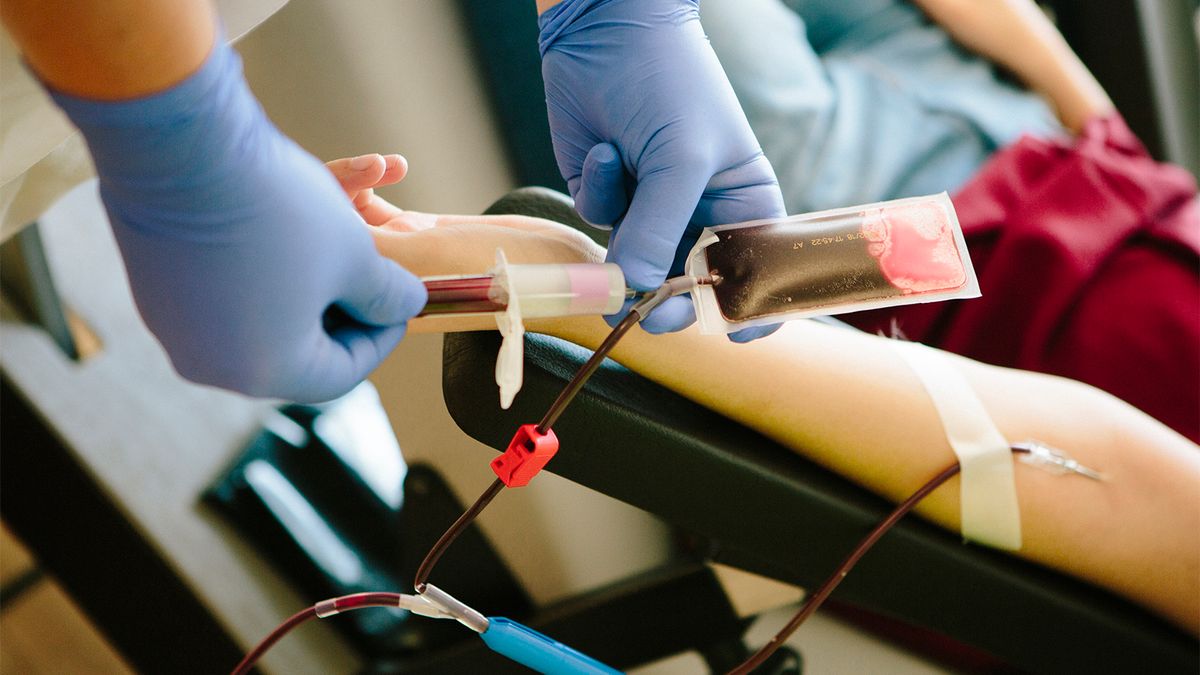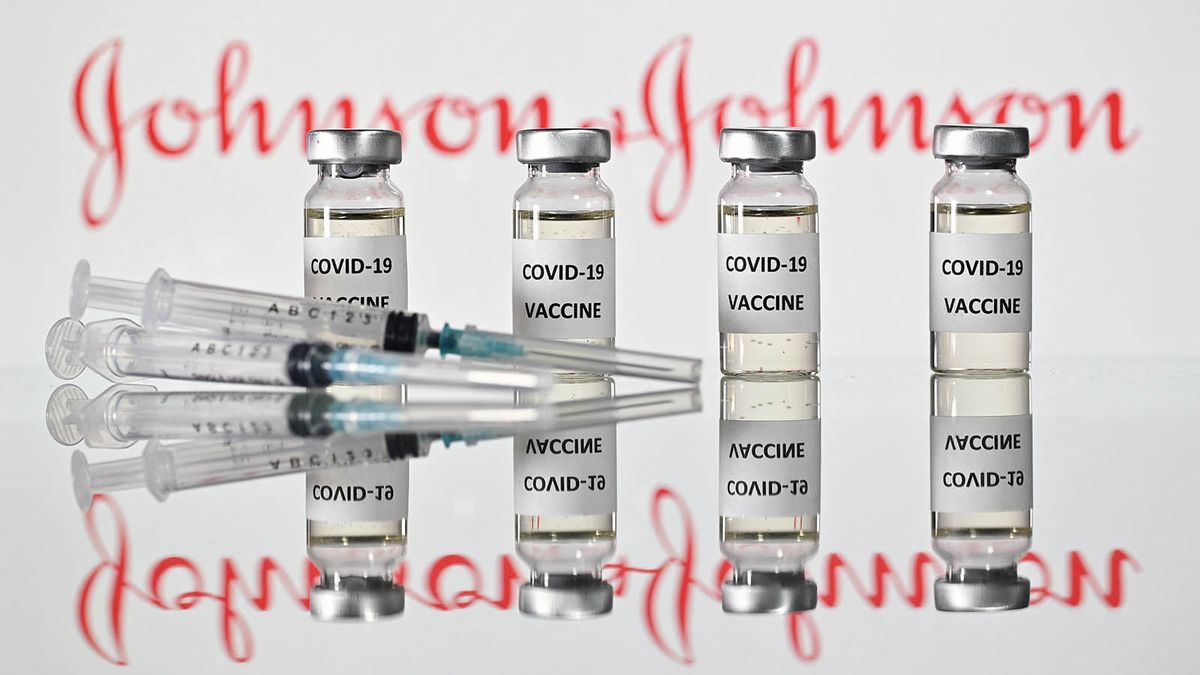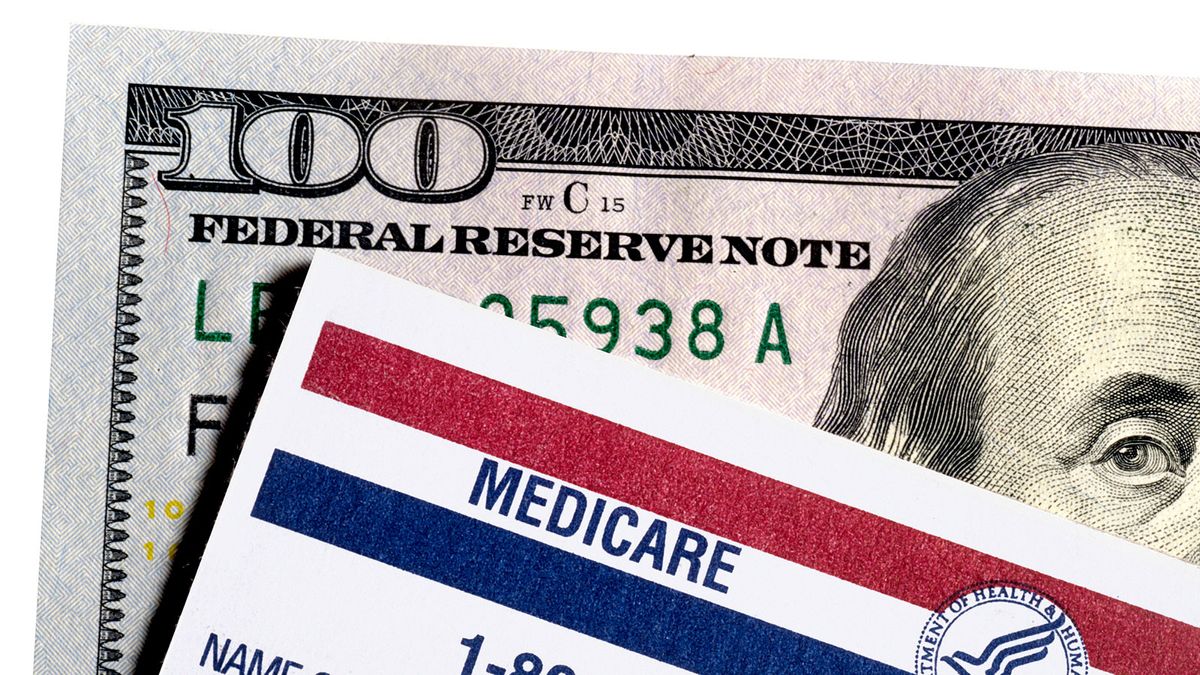
การทดสอบคอเลสเตอรอลคือการตรวจเลือดอย่างง่ายซึ่งแทบไม่เจ็บปวดและราคาไม่แพงนัก และการตรวจระดับคอเลสเตอรอลในเลือดของคุณเป็นขั้นตอนแรกในการควบคุมให้อยู่ภายใต้การควบคุม
ในสำนักงานแพทย์หรือที่โรงพยาบาล เลือดจำนวนเล็กน้อยจะถูกดึงเข้าไปในหลอดทดลองและวิเคราะห์ที่ห้องปฏิบัติการ จากนั้นผลการทดสอบจะถูกส่งกลับไปยังแพทย์ของคุณ ซึ่งจะแจ้งให้คุณทราบถึงค่าตัวเลขและอธิบายความหมาย ค่าตัวเลขระบุน้ำหนักในหน่วยมิลลิกรัมของคอเลสเตอรอลที่มีอยู่ในเลือด 1 เดซิลิตร และแสดงเป็น mg/dL
เทคโนโลยีใหม่ยังทำให้การตรวจคัดกรองคอเลสเตอรอลในวงกว้างเป็นไปได้ด้วย โปรแกรมคัดกรองโคเลสเตอรอลใช้เครื่องแบบพกพาซึ่งให้ผลลัพธ์ในเวลาน้อยกว่าสิบนาที โดยใช้เลือดที่ดึงออกมาโดยการทิ่มนิ้วของผู้ป่วย
โปรแกรมดังกล่าวช่วยให้ชาวอเมริกันจำนวนมากสะดวกในการตรวจสอบคอเลสเตอรอลในสถานที่ต่างๆ เช่น ห้างสรรพสินค้าและสถานที่ทำงาน แต่ผลการทดสอบดังกล่าวควรได้รับการยืนยันที่สำนักงานแพทย์หรือห้องปฏิบัติการ ซึ่งจะทำได้อย่างแม่นยำยิ่งขึ้น
แผงไขมันช่วยให้แพทย์ทราบข้อมูลเพิ่มเติมเกี่ยวกับระดับคอเลสเตอรอลของคุณ ค้นหาข้อมูลเกี่ยวกับการทดสอบนี้ในหน้าถัดไป
สำหรับข้อมูลเพิ่มเติมเกี่ยวกับคอเลสเตอรอล โปรดดูที่:
- ระดับคอเลสเตอรอล : เราทุกคนรู้ว่ามีคอเลสเตอรอลที่ "ดี" และ "ไม่ดี" หาคำตอบว่าทำไมคุณจึงต้องการคอเลสเตอรอลชนิดใดชนิดหนึ่งมากกว่าและอีกชนิดหนึ่งน้อยกว่า
- ผลที่ตามมาของคอเลสเตอรอลสูง : คอเลสเตอรอลสูงอาจทำให้หัวใจวายได้ เรียนรู้เพิ่มเติมเกี่ยวกับคอเลสเตอรอลสูงและหัวใจวาย และภาวะอื่นๆ ที่คอเลสเตอรอลสูงมีส่วนทำให้เกิด
- สาเหตุของคอเลสเตอรอลสูง : อาหารและ DNA เป็นสาเหตุหลักของคอเลสเตอรอลสูง เรียนรู้ว่าทำไมตัวเลขอาจสูงในกรณีของคุณ
- วิธีลดคอเลสเตอรอล : เช่นเดียวกับหลาย ๆ เงื่อนไขการรับประทานอาหารที่ถูกต้องและการออกกำลังกายช่วยควบคุมคอเลสเตอรอล เรียนรู้สิ่งที่มีความหมายสำหรับคุณ
- คอเลสเตอรอลทำงานอย่างไร : คอเลสเตอรอลมีความจำเป็นต่อร่างกาย หาคำตอบว่าทำไมเราต้องการมันและเท่าไหร่คือมากเกินไป
ข้อมูลนี้มีจุดประสงค์เพื่อให้ข้อมูลเท่านั้น ไม่ได้มีวัตถุประสงค์เพื่อให้คำแนะนำทางการแพทย์ บรรณาธิการของคู่มือผู้บริโภค (R), Publications International, Ltd. ผู้เขียนและผู้จัดพิมพ์จะไม่รับผิดชอบต่อผลที่อาจเกิดขึ้นจากการรักษา ขั้นตอน การออกกำลังกาย การปรับเปลี่ยนอาหาร การกระทำหรือการใช้ยาซึ่งเป็นผลมาจากการอ่านหรือติดตามข้อมูล ที่มีอยู่ในข้อมูลนี้ การเผยแพร่ข้อมูลนี้ไม่ถือเป็นการประกอบวิชาชีพด้านการแพทย์ และข้อมูลนี้ไม่ได้แทนที่คำแนะนำของแพทย์หรือผู้ให้บริการด้านสุขภาพอื่นๆ ก่อนทำการรักษาใด ๆ ผู้อ่านต้องขอคำแนะนำจากแพทย์หรือผู้ให้บริการด้านสุขภาพอื่น ๆ
- แผงไขมัน
- ไม่ใช่ HDL และ Apo B
- อัตราส่วนคอเลสเตอรอล
- การทดสอบไขมันขั้นสูง
- ไบโอมาร์คเกอร์
- หลอดเลือดไม่แสดงอาการ
- ความแม่นยำในการทดสอบคอเลสเตอรอล
แผงไขมัน

แม้ว่าการศึกษาในวงกว้างจะพบว่าการวัดระดับโคเลสเตอรอลในเลือดทั้งหมดสามารถทำนายความเสี่ยงต่อโรคหลอดเลือดหัวใจได้ แต่แผงไขมันก็ให้ข้อมูลที่เป็นประโยชน์มากกว่ามาก นี่คือการวัดคอเลสเตอรอลรวม คอเลสเตอรอล HDL คอเลสเตอรอล LDL และไตรกลีเซอไรด์
แผงไขมันต้องอดอาหาร 9 ถึง 12 ชั่วโมง เมื่อไม่อดอาหาร เฉพาะผลลัพธ์สำหรับคอเลสเตอรอลรวมและ HDL คอเลสเตอรอลเท่านั้นที่มีผล ผู้ใหญ่ทุกคนที่อายุเกิน 20 ปีควรได้รับแผงไขมันทุก ๆ ห้าปี และผู้ที่มีความเสี่ยงสูงต่อโรคหลอดเลือดหัวใจอาจแนะนำให้รับแผงไขมันบ่อยขึ้น
สามารถวัดคอเลสเตอรอลรวม คอเลสเตอรอล HDL และไตรกลีเซอไรด์ได้โดยตรง คอเลสเตอรอล LDL คำนวณโดยการลบ HDL คอเลสเตอรอลและ VLDL คอเลสเตอรอลออกจากคอเลสเตอรอลทั้งหมด
ในการตรวจสอบ VLDL คอเลสเตอรอล ให้แบ่งไตรกลีเซอไรด์ด้วยห้า (เนื่องจาก VLDL มีไตรกลีเซอไรด์ประมาณห้าเท่าของคอเลสเตอรอล) สำหรับผู้ที่มีไตรกลีเซอไรด์มากกว่า 200 มก./เดซิลิตร การคำนวณ VLDL คอเลสเตอรอลนี้ไม่ถูกต้องเท่ากับเมื่อไตรกลีเซอไรด์มีค่าต่ำกว่า อันที่จริง หากไตรกลีเซอไรด์เกิน 400 มก./เดซิลิตร การคำนวณไม่น่าเชื่อถือเกินกว่าจะเป็นประโยชน์
ในกรณีที่ระดับไตรกลีเซอไรด์สูง การตรวจวัดคอเลสเตอรอลที่ไม่ใช่ HDL และอะโพลิโพโปรตีน บี อาจมีประโยชน์มากกว่าในการพิจารณาความเสี่ยงต่อโรคหลอดเลือดหัวใจ ค้นหาวิธีที่แพทย์คำนวณตัวเลขเหล่านี้ในหน้าถัดไป
สำหรับข้อมูลเพิ่มเติมเกี่ยวกับคอเลสเตอรอล โปรดดูที่:
- ระดับคอเลสเตอรอล : เราทุกคนรู้ว่ามีคอเลสเตอรอลที่ "ดี" และ "ไม่ดี" หาคำตอบว่าทำไมคุณจึงต้องการคอเลสเตอรอลชนิดใดชนิดหนึ่งมากกว่าและอีกชนิดหนึ่งน้อยกว่า
- สาเหตุของคอเลสเตอรอลสูง : อาหารและ DNA เป็นสาเหตุหลักของคอเลสเตอรอลสูง เรียนรู้ว่าทำไมตัวเลขอาจสูงในกรณีของคุณ
- ผลที่ตามมาของคอเลสเตอรอลสูง : คอเลสเตอรอลสูงอาจทำให้หัวใจวายได้ เรียนรู้เพิ่มเติมเกี่ยวกับคอเลสเตอรอลสูงและหัวใจวาย และภาวะอื่นๆ ที่คอเลสเตอรอลสูงมีส่วนทำให้เกิด
- วิธีลดคอเลสเตอรอล : เช่นเดียวกับหลาย ๆ เงื่อนไขการรับประทานอาหารที่ถูกต้องและการออกกำลังกายช่วยควบคุมคอเลสเตอรอล เรียนรู้สิ่งที่มีความหมายสำหรับคุณ
- คอเลสเตอรอลทำงานอย่างไร : คอเลสเตอรอลมีความจำเป็นต่อร่างกาย หาคำตอบว่าทำไมเราต้องการมันและเท่าไหร่คือมากเกินไป
ข้อมูลนี้มีจุดประสงค์เพื่อให้ข้อมูลเท่านั้น ไม่ได้มีวัตถุประสงค์เพื่อให้คำแนะนำทางการแพทย์ บรรณาธิการของคู่มือผู้บริโภค (R), Publications International, Ltd. ผู้เขียนและผู้จัดพิมพ์จะไม่รับผิดชอบต่อผลที่อาจเกิดขึ้นจากการรักษา ขั้นตอน การออกกำลังกาย การปรับเปลี่ยนอาหาร การกระทำหรือการใช้ยาซึ่งเป็นผลมาจากการอ่านหรือติดตามข้อมูล ที่มีอยู่ในข้อมูลนี้ การเผยแพร่ข้อมูลนี้ไม่ถือเป็นการประกอบวิชาชีพด้านการแพทย์ และข้อมูลนี้ไม่ได้แทนที่คำแนะนำของแพทย์หรือผู้ให้บริการด้านสุขภาพอื่นๆ ก่อนทำการรักษาใด ๆ ผู้อ่านต้องขอคำแนะนำจากแพทย์หรือผู้ให้บริการด้านสุขภาพอื่น ๆ
ไม่ใช่ HDL และ Apo B

คอเลสเตอรอลที่ไม่ใช่ HDL คือผลรวมของคอเลสเตอรอล VLDL และ LDL ซึ่งทั้งสองอย่างนี้มีอนุภาค apolipoprotein B (apo B) ที่ทำให้เกิดโรค เนื่องจากเป็นค่าประมาณของอนุภาค apo B คอเลสเตอรอลที่ไม่ใช่ HDL จึงเป็นตัวทำนายความเสี่ยงต่อโรคหลอดเลือดหัวใจได้ดีกว่าการวัด LDL คอเลสเตอรอลแบบง่ายๆ
เป็นการวัดที่มีประโยชน์ในผู้ที่มีระดับไตรกลีเซอไรด์ระหว่าง 200 มก./ดล. และ 500 มก./ดล. ซึ่งน่าจะมีอนุภาค apo B มากกว่าอย่างมาก อย่างไรก็ตาม สำหรับผู้ที่มีระดับไตรกลีเซอไรด์สูงกว่า 500 มก./เดซิลิตร คอเลสเตอรอลที่ไม่ใช่ HDL อาจไม่สามารถทำนายความเสี่ยงของการเกิดโรคหลอดเลือดหัวใจได้อย่างแม่นยำ เนื่องจากคอเลสเตอรอลทั้งหมดที่มีอยู่ใน VLDL ไม่มีผลต่อการเกิดหลอดเลือด
ในการคำนวณคอเลสเตอรอลที่ไม่ใช่ HDL ให้ลบ HDL คอเลสเตอรอลออกจากคอเลสเตอรอลทั้งหมด เมื่อคอเลสเตอรอล LDL อยู่ที่เป้าหมาย คอเลสเตอรอลที่ไม่ใช่ HDL ควรลดลงเหลือ 30 มก./ดล. ซึ่งมากกว่าเป้าหมาย LDL-cholesterol
แม้ว่าการวัดระดับคอเลสเตอรอลที่ไม่ใช่ HDL จะถือเป็นการทดแทนที่ยอมรับได้สำหรับการวัด apo B โดยตรง แต่การวัด apo B โดยตรงอาจมีประโยชน์ในผู้ที่มีความเสี่ยงสูงต่อโรคหลอดเลือดหัวใจ รวมถึงผู้ที่มีลักษณะของการเผาผลาญ กลุ่มอาการต่างๆ เช่น ไตรกลีเซอไรด์สูง คอเลสเตอรอล HDL ต่ำ และโรคอ้วน
นอกจากนี้ การวัดค่า apolipoprotein A-1 (apo A1) อาจมีประโยชน์เช่นกัน การศึกษาของ INTERHEART พบว่าอัตราส่วนของ apo B ต่อ apo A1 ทำนายความเสี่ยงของภาวะหัวใจวายได้ดีกว่าการทดสอบคอเลสเตอรอลแบบเดิมๆ การวัดนี้มีค่าใช้จ่ายเพิ่มเติม แต่ไม่ต้องอดอาหาร
When reporting your test results, your doctor might refer to a cholesterol ratio. On the next page, learn what is behind these numbers.
see:
- Cholesterol Levels : We all know there's "good" and "bad" cholesterol. Find out why you need more of one kind of cholesterol and less of the other.
- Consequences of High Cholesterol : High cholesterol can lead to a heart attack. Learn more about high cholesterol and heart attack and what other conditions high cholesterol contributes to.
- Causes of High Cholesterol : Diet and DNA are the main causes of high cholesterol. Learn why the numbers might be high in your case.
- How to Lower Cholesterol : Like many conditions, eating right and exercising helps control cholesterol. Learn what that means for you.
- How Cholesterol Works : Cholesterol is essential to the body. Find out why we need it and how much is too much.
This information is solely for informational purposes. IT IS NOT INTENDED TO PROVIDE MEDICAL ADVICE. Neither the Editors of Consumer Guide (R), Publications International, Ltd., the author nor publisher take responsibility for any possible consequences from any treatment, procedure, exercise, dietary modification, action or application of medication which results from reading or following the information contained in this information. The publication of this information does not constitute the practice of medicine, and this information does not replace the advice of your physician or other health care provider. Before undertaking any course of treatment, the reader must seek the advice of their physician or other health care provider.
Cholesterol Ratio

A cholesterol ratio tells you how much good and bad cholesterol you have. Many patients find it hard to keep the various fractions of cholesterol straight in their minds. LDL values get easily confused with HDL values. For this reason, many physicians find it easier to provide their patients with a simple ratio of total blood cholesterol to HDL or of LDL to HDL.
These ratios are strong predictors of coronary heart disease. In the Framingham Heart study, for instance, the ratio of total cholesterol to HDL and the ratio of LDL to HDL were found to have the strongest associations with coronary heart disease. The researchers suggested that a total-cholesterol-to-HDL ratio greater than six and an LDL-to-HDL ratio greater than four indicated a high risk for coronary heart disease.
Although these ratios are simple ways of summarizing a good deal of confusing data, the specific values that make up the ratios need to be looked at individually. The fractions that make up the ratio give you important information that is lost if they are not considered separately.
Indeed, the National Cholesterol Education Program (NCEP) does not use ratios in its recommendations specifically because it considers the fractions to be independent risk factors for coronary heart disease. Therefore, you need to ask for the individual values if they are not provided to you.
There are several tests that you should be aware of even though they typically are not recommended. One such test, the advanced lipid test, is explained on the next page.
For more information on cholesterol, see:
- Cholesterol Levels: We all know there's "good" and "bad" cholesterol. Find out why you need more of one kind of cholesterol and less of the other.
- Causes of High Cholesterol : Diet and DNA are the main causes of high cholesterol. Learn why the numbers might be high in your case.
- Consequences of High Cholesterol: High cholesterol can lead to a heart attack. Learn more about high cholesterol and heart attack and what other conditions high cholesterol contributes to.
- How to Lower Cholesterol : Like many conditions, eating right and exercising helps control cholesterol. Learn what that means for you.
- How Cholesterol Works: Cholesterol is essential to the body. Find out why we need it and how much is too much.
This information is solely for informational purposes. IT IS NOT INTENDED TO PROVIDE MEDICAL ADVICE. Neither the Editors of Consumer Guide (R), Publications International, Ltd., the author nor publisher take responsibility for any possible consequences from any treatment, procedure, exercise, dietary modification, action or application of medication which results from reading or following the information contained in this information. The publication of this information does not constitute the practice of medicine, and this information does not replace the advice of your physician or other health care provider. Before undertaking any course of treatment, the reader must seek the advice of their physician or other health care provider.
Advanced Lipid Testing

Advanced lipid testing can identify additional risk factors of coronary heart disease that standard blood-cholesterol tests typically do not. Advanced lipid testing can:
- assess apolipoproteins, such as apo B, apo A1, and lipoprotein (a), or Lp(a)
- identify subspecies, or components, of HDL and LDL (this particular test is not recommended at this time because it has not been shown to add value to the standard blood-cholesterol tests)
- measure the number of LDL particles (nuclear magnetic resonance spectroscopy can indicate the total number of LDL particles; like a measure of apo B, this may be especially useful in people who have low HDL cholesterol or characteristics of metabolic syndrome)
In one study that compared four methods of advanced lipid testing, the tests arrived at the same results in only 8 percent of the cases. This suggests that the test you take affects your results.
On the other hand, standard blood-cholesterol tests are standardized. Because of the variability in test results, advanced lipid testing is not routinely recommended at this time. Advanced lipid testing also requires an extra cost.
Although it is not always readily available, apo B testing is standardized. In fact, it may be slightly more accurate than non-HDL cholesterol testing.
Some physicians suggest that it should replace LDL and non-HDL cholesterol as both a screening test and a target of treatment; however, because of the widespread use of the National Cholesterol Education Program (NCEP) guidelines and because LDL cholesterol is frequently a target for treatment in many large clinical trials, LDL cholesterol, and in certain circumstances non-HDL-cholesterol, is often more familiar and useful to doctors who can then compare their patients' LDL cholesterol values to those seen in clinical trials.
But measurement of apo B or total LDL particles can be useful in people who have low HDL cholesterol and metabolic risk factors. The NCEP guidelines suggest that people with triglyceride levels 200 mg/dL or greater (some doctors believe 150 mg/dL might be a more appropriate indicator) who also have metabolic risk factors should be treated until both LDL cholesterol and non-HDL cholesterol values are at goal.
Biomarkers testing can provide even more information about cholesterol and the risk of coronary heart disease, in addition to advanced lipid testing. Find out about these tests on the next page.
For more information on cholesterol, see:
- Cholesterol Levels: We all know there's "good" and "bad" cholesterol. Find out why you need more of one kind of cholesterol and less of the other.
- Causes of High Cholesterol : Diet and DNA are the main causes of high cholesterol. Learn why the numbers might be high in your case.
- Consequences of High Cholesterol: High cholesterol can lead to a heart attack. Learn more about high cholesterol and heart attack and what other conditions high cholesterol contributes to.
- How to Lower Cholesterol : Like many conditions, eating right and exercising helps control cholesterol. Learn what that means for you.
- How Cholesterol Works: Cholesterol is essential to the body. Find out why we need it and how much is too much.
This information is solely for informational purposes. IT IS NOT INTENDED TO PROVIDE MEDICAL ADVICE. Neither the Editors of Consumer Guide (R), Publications International, Ltd., the author nor publisher take responsibility for any possible consequences from any treatment, procedure, exercise, dietary modification, action or application of medication which results from reading or following the information contained in this information. The publication of this information does not constitute the practice of medicine, and this information does not replace the advice of your physician or other health care provider. Before undertaking any course of treatment, the reader must seek the advice of their physician or other health care provider.
Biomarkers

Biomarkers are substances in the blood that may indicate risk of cardiovascular disease. Biomarkers are not routinely measured at this time because it in unknown whether they add value to the traditional evaluation of risk factors that doctors currently perform. Biomarkers of cardiovascular disease include:
- homocysteine (evidence suggests that homocysteine, an amino acid, oxidizes LDL, which damages the arteries; however, studies have also shown that when levels of homocysteine are reduced using folic acid and vitamin B12, the risk of coronary heart disease is not similarly reduced)
- fibrinogen (a high level of fibrinogen, an essential protein for the coagulation of blood, has been associated with an increased risk of coronary thrombosis, or heart attack resulting from a blood clot in the artery)
- C-reactive protein, or CRP (this protein is produced by the liver and released into the bloodstream during episodes of inflammation)
- B-type natriuretic peptide (this amino acid chain is released into the bloodstream when heart failure develops)
- D-dimer (increased levels of this substance -- made up of a fragment of blood clot -- suggest an increased risk of pulmonary embolism, or blood clots in the lungs)
A recent study by Framingham Heart Study researchers evaluated the usefulness of measuring many of the most-used biomarkers to see if they could predict death and major cardiovascular events better than the traditional evaluation that doctors perform using the Framingham 10-year risk scoring, which determines short-term risk of coronary heart disease.
They found that the biomarkers predicted risk only slightly better but that this did not warrant routine measurement and the increased costs associated with the tests. However, the researchers also concluded that measuring certain markers -- for which the tests were inexpensive, such as CRP -- could help doctors determine the level of therapeutic intensity for both high cholesterol and high blood pressure.
Tests that indicate subclinical atherosclerosis may provide information about coronary heart disease. Learn more about subclinical atherosclerosis on the next page.
For more information on cholesterol, see.
- Cholesterol Levels: We all know there's "good" and "bad" cholesterol. Find out why you need more of one kind of cholesterol and less of the other.
- Causes of High Cholesterol : Diet and DNA are the main causes of high cholesterol. Learn why the numbers might be high in your case.
- Consequences of High Cholesterol: High cholesterol can lead to a heart attack. Learn more about high cholesterol and heart attack and what other conditions high cholesterol contributes to.
- How to Lower Cholesterol : Like many conditions, eating right and exercising helps control cholesterol. Learn what that means for you.
- How Cholesterol Works: Cholesterol is essential to the body. Find out why we need it and how much is too much.
This information is solely for informational purposes. IT IS NOT INTENDED TO PROVIDE MEDICAL ADVICE. Neither the Editors of Consumer Guide (R), Publications International, Ltd., the author nor publisher take responsibility for any possible consequences from any treatment, procedure, exercise, dietary modification, action or application of medication which results from reading or following the information contained in this information. The publication of this information does not constitute the practice of medicine, and this information does not replace the advice of your physician or other health care provider. Before undertaking any course of treatment, the reader must seek the advice of their physician or other health care provider.
Subclinical Atherosclerosis

Subclinical atherosclerosis is a fancy term doctors use to describe the early stages of atherosclerosis that can occur throughout the body. Tests that measure subclinical atherosclerosis can be useful for people who want to know if they are at an increased risk of cardiovascular disease.
Significant evidence suggests that those who suffer from other atherosclerotic diseases, or atherosclerosis of peripheral -- not coronary -- arteries, are at an increased risk of coronary heart disease. This is because a person who has atherosclerosis in other blood vessels likely has atherosclerosis in the coronary arteries as well. The ankle-brachial blood pressure index (ABI) measures systolic blood pressure in the legs.
This test can diagnose peripheral arterial disease (PAD) -- a disease in which the arteries are narrowed and unable to carry enough blood to muscles in the legs while walking, which causes pain. Exercise or stress tests identify middle-aged men whose blood supply to the heart has been reduced due to narrowed arteries; however, these tests are not considered as reliable for other people.
Tests such as carotid sonography can determine something called carotid intimal medial thickness (IMT), or the severity of atherosclerosis affecting the carotid arteries that supply the brain with blood. Other tests can measure the amount of calcium, which is found in plaque, in the coronary arteries.
Coronary calcium, however, is not the same thing as a coronary blockage, and people who have high coronary calcium scores might still have "normal" results on stress tests. Although this test for presence of coronary calcium is not routinely recommended, it can be useful in people who are more likely to have coronary heart disease, and their doctor wishes to determine whether more intensive therapy may be beneficial.
For people who have two or more risk factors and a Framingham 10-year risk scoring of 10 to 20 percent, this test could result in a change in treatment. For those who have coronary calcium present, there are no studies to indicate that follow-up tests are of value. Indeed, it is entirely possible that with appropriate treatment that reduces risk factors, plaques could improve despite calcium deposits worsening.
And finally, in some young patients, especially smokers, a negative calcium score is not reassuring because they could have soft plaque that has not yet calcified. This test is best used to determine if treatment goals should be modified but should not be performed as a general screen.
The use of advanced lipid testing, measures of biomarkers, or tests for subclinical atherosclerosis can be useful in certain cases. For people at increased risk of cardiovascular disease (for example, someone with two risk factors, an LDL-cholesterol level between 100 and 129 mg/dL, and a Framingham 10-year risk scoring of 10 to 20 percent), the results of these tests might influence treatment decisions.
However, these tests can be costly, and unless they are evaluated by an expert, it's possible that they could be misinterpreted, resulting in further costly testing, and possibly unnecessarily aggressive treatment. Studies are ongoing to determine how best to use these tests and the information that they generate to benefit patients.
For all forms of cholesterol testing, accuracy is an issue. On the next page, find out what you can do to ensure the validity of your numbers.
For more information on cholesterol, see:
- Cholesterol Levels: We all know there's "good" and "bad" cholesterol. Find out why you need more of one kind of cholesterol and less of the other.
- Causes of High Cholesterol : Diet and DNA are the main causes of high cholesterol. Learn why the numbers might be high in your case.
- Consequences of High Cholesterol: High cholesterol can lead to a heart attack. Learn more about high cholesterol and heart attack and what other conditions high cholesterol contributes to.
- How to Lower Cholesterol : Like many conditions, eating right and exercising helps control cholesterol. Learn what that means for you.
- How Cholesterol Works: Cholesterol is essential to the body. Find out why we need it and how much is too much.
This information is solely for informational purposes. IT IS NOT INTENDED TO PROVIDE MEDICAL ADVICE. Neither the Editors of Consumer Guide (R), Publications International, Ltd., the author nor publisher take responsibility for any possible consequences from any treatment, procedure, exercise, dietary modification, action or application of medication which results from reading or following the information contained in this information. The publication of this information does not constitute the practice of medicine, and this information does not replace the advice of your physician or other health care provider. Before undertaking any course of treatment, the reader must seek the advice of their physician or other health care provider.
Cholesterol Tests Accuracy

In the past, there was some concern over cholesterol tests' accuracy. The debate takes on weight as new technology and an increasing awareness of cholesterol's role in heart disease may soon make such testing in your doctor's office as common as blood-pressure measurements.
In the past, the concern centered on how accurately test results expressed a person's true cholesterol level. Today, laboratories that perform the analyses of blood samples are generally certified so that cholesterol measurements are accurate and reliable. Ask your doctor if the lab used is certified.
A variety of factors can influence the accuracy of your test results, including age, sex, seasonal variations, recent changes in diet or weight, alcohol intake, exercise, family history, other illnesses, pregnancy, and certain medications.
Your age and sex influence your blood-cholesterol level. In childhood, females have higher cholesterol values. Males show a significant decline during adolescence, when testosterone starts flooding their bodies. Adult males over the age of 20, however, generally have higher levels of cholesterol than females. Once women reach menopause, they have higher cholesterol levels than their male counterparts.
Seasonal variation has been shown to affect cholesterol values. In one study, the cholesterol levels of subjects who were not receiving treatment were an average of 7.4 mg/dL higher in December than in June. The reasons for this are still unknown.
Your cholesterol levels are also clearly affected when excessive calories are consumed or your intake of saturated fat and cholesterol is increased. Excess alcohol intake raises your triglyceride levels and HDL levels.
To ensure that your test results are consistent, therefore, you need to have the test performed after you've maintained your usual diet and weight for at least two weeks. In other words, you don't want to have your cholesterol tested the day after Thanksgiving or the day after you quit a diet.
Engaging in vigorous exercise just before your blood test can temporarily lower your cholesterol and triglyceride values, but a vigorous workout can also raise the level of a muscle enzyme called CPK. It's wise, therefore, to take a day off from intense workouts just before you take the test. (On the other hand, regular, vigorous exercise can have a longer-lasting effect by raising HDL and lowering triglyceride levels.)
A personal or family history of certain diseases can also affect your results and your treatment. For example, a family history of elevated lipids is important because genetic forms of high cholesterol often do not respond fully to diet therapy. Yet these disorders increase your risk of heart disease by exposing you to lifelong elevated cholesterol levels. These two points need to be considered when your doctor is deciding how to interpret your test results.
Likewise, a severely elevated cholesterol level (more than 240 mg/dL) that suddenly appears later in life may be caused by a disease that requires treatment before the cholesterol levels can be lowered. Hypothyroidism (due to insufficient amounts of thyroid hormone) is a common secondary cause of elevated cholesterol levels. This disease can be diagnosed by a blood test.
People with poorly controlled diabetes also tend to have high cholesterol levels. Other less commonly found causes include nephrotic syndrome (a kidney disease), obstructive liver disease, and, in rare instances, dysgammaglobulinemia (a disorder of the immune system) and porphyria (a group of metabolic disorders).
Cholesterol values also rise progressively in pregnancy and often take from several months to a year to return to pre-pregnancy levels. It's important for your doctor to know if you could be pregnant, since high cholesterol caused by pregnancy is only temporary and does not warrant treatment -- especially drug therapy -- to get it under control.
Some medications used to treat other medical problems can also affect cholesterol levels. They include medications used to lower blood pressure (hydrochlorothiazide, chlorthalidone, and nonselective beta blockers such as propranolol), estrogen preparations, and anabolic steroids.
In addition to these biologic factors, situational factors must also be considered when your cholesterol values are interpreted. Situational factors that can affect lipid testing include fasting, your posture for the 30 minutes before the blood is drawn, recent surgery, and recent illnesses such as heart attack and infection.
Even your posture before the blood test can affect the values obtained. A blood sample drawn after you've been sitting for 30 minutes will show a higher cholesterol level than a sample drawn when you're lying down. This difference comes into play if you have one test done in a screening program (where you may have been standing or sitting before the test) and a follow-up test performed in a hospital (where you may have been lying down when the test was performed).
Finally, it's widely recognized that cholesterol values fall and triglyceride values rise after a heart attack, major surgery, or extensive burns. When admitted to the hospital for a major vascular event, such as a heart attack or stroke, cholesterol measurements should be taken immediately or within at least 24 hours.
After such an event, LDL-cholesterol levels fall and stay low for weeks. Physicians should then wait at least eight weeks before performing cholesterol measurements. This allows LDL cholesterol to return to a fairly normal level and for the patient to settle on a steady diet and reach a stable weight when the measurements are made.
Practically speaking, there are a few steps you can take to help reduce nonlaboratory errors. Before you have the test done, ask yourself, "Have my diet, exercise patterns, medications, and health been stable for the past two or three weeks?" If the answer is yes, then proceed with the test. If the answer is no, then it may be best to delay the test until these factors have been consistent for at least two weeks.
Before treatment is begun, your doctor will decide whether laboratory studies should be performed to rule out secondary causes of high blood cholesterol. They may include a blood or urine test to rule out pregnancy, a blood test to diagnose hypothyroidism or hyperthyroidism, a urine test to rule out nephrotic syndrome, a fasting blood sugar test to see if diabetes is present, and liver function tests to see if there is evidence of obstructive liver disease.
The evaluation and tests will help your doctor understand the cause of your high blood-cholesterol level and determine how to go about treating it. Diet therapy is considered the cornerstone of cholesterol-controlling therapy. Drug therapy should be considered only when diet therapy has failed to lower your blood cholesterol to an acceptable level (or in rare cases when a quicker and more drastic lowering is essential).
Even then, however, diet therapy must be continued. To monitor your progress in diet or drug therapy, your doctor will periodically test your cholesterol levels.
Now that you know what will happen before, during, and after a cholesterol test, you can follow your doctor's orders to get tested with confidence.
For more information on cholesterol, see:
- Cholesterol Levels: We all know there's "good" and "bad" cholesterol. Find out why you need more of one kind of cholesterol and less of the other.
- Causes of High Cholesterol : Diet and DNA are the main causes of high cholesterol. Learn why the numbers might be high in your case.
- Consequences of High Cholesterol: High cholesterol can lead to a heart attack. Learn more about high cholesterol and heart attack and what other conditions high cholesterol contributes to.
- How to Lower Cholesterol : Like many conditions, eating right and exercising helps control cholesterol. Learn what that means for you.
- How Cholesterol Works: Cholesterol is essential to the body. Find out why we need it and how much is too much.
ABOUT THE AUTHOR
Dr. Neil Stone is a professor of clinical medicine in cardiology at the Feinberg School of Medicine of Northwestern University and a practicing internist-cardiologist-lipidologist at Northwestern Memorial Hospital. He also serves as the Medical Director of the Vascular Center for the Bluhm Cardiovascular Institute. Dr. Stone was a member of the first and third National Cholesterol Education Program Adult Treatment Panels and a past chairman of the American Heart Association Nutrition Committee and Clinical Affairs Committee.
ข้อมูลนี้มีจุดประสงค์เพื่อให้ข้อมูลเท่านั้น ไม่ได้มีวัตถุประสงค์เพื่อให้คำแนะนำทางการแพทย์ บรรณาธิการของคู่มือผู้บริโภค (R), Publications International, Ltd. ผู้เขียนและผู้จัดพิมพ์จะไม่รับผิดชอบต่อผลที่อาจเกิดขึ้นจากการรักษา ขั้นตอน การออกกำลังกาย การปรับเปลี่ยนอาหาร การกระทำหรือการใช้ยาซึ่งเป็นผลมาจากการอ่านหรือติดตามข้อมูล ที่มีอยู่ในข้อมูลนี้ การเผยแพร่ข้อมูลนี้ไม่ถือเป็นการประกอบวิชาชีพด้านการแพทย์ และข้อมูลนี้ไม่ได้แทนที่คำแนะนำของแพทย์หรือผู้ให้บริการด้านสุขภาพอื่นๆ ก่อนทำการรักษาใด ๆ ผู้อ่านต้องขอคำแนะนำจากแพทย์หรือผู้ให้บริการด้านสุขภาพอื่น ๆ















































